What our friends at Stat observed

Stat produced a study of answer box features from the search ranking data they collect.
In their study, they found a few interesting common features most sites with answer boxes exhibited:
- 9.28 percent of commercial SERPs had featured snippets
- Some queries had very high “SERP value” ([CPC x Annual Search Traffic]) of over US$1m+
- Local serps do not contain featured snippets
- Stat found 3 types of featured snippet: paragraph, list (numbered and bulleted) and table snippets
One really interesting point made was this:
Paragraph snippets were most common, showing up in 82 percent of featured snippets. List snippets appeared in 10.8 percent, and table snippets in 7.3 percent. All three occasionally showed images, but the formats never overlapped one another.
Paragraph snippets would usually only contain text that answers the query but in paragraph containers (<p>) only.
As I discovered, it’s (easily) possible to convert paragraph snippets into list snippets by using cleaner markup. Specifically, by breaking down the paragraph with ordered lists (<ol>), or adding an ordered list summary at the top of the page.
In fact, it was this killer take away from the study that gave me the idea to give it a try:
– Featured snippet URLs often feature <ol> and <table>
That’s very useful to know and I’ll show you just how powerful <ol> can be later on.
Some of my team enjoy mocking me for keeping some of the more irrelevant articles hosted on BV but they certainly make for a great place to carry out quick SEO experiments!
Query number 1: “iPhone black screen”
Here’s how that snippet started out; a paragraph snippet without any form of title:
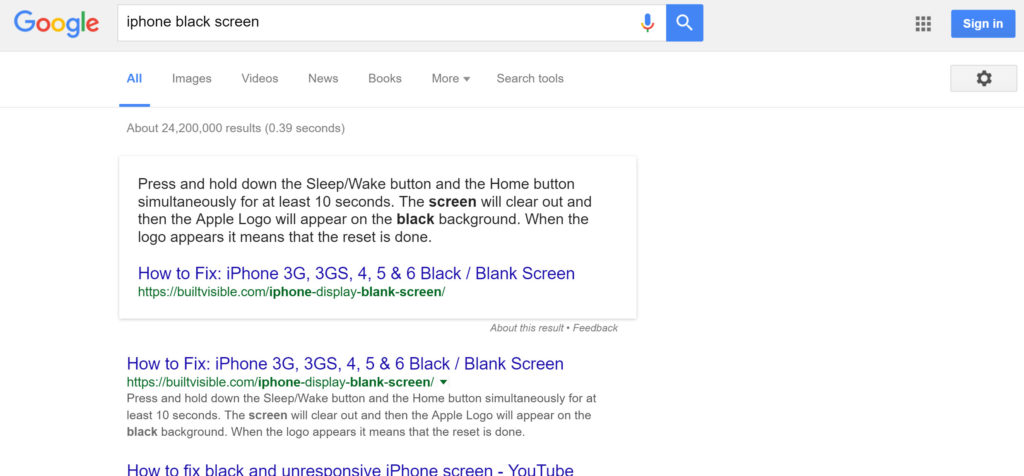
In a minor update, I broke down the paragraph into steps marked up in an ordered list.
Submitting via Search Console’s Fetch as Googlebot yielded an update within the hour:
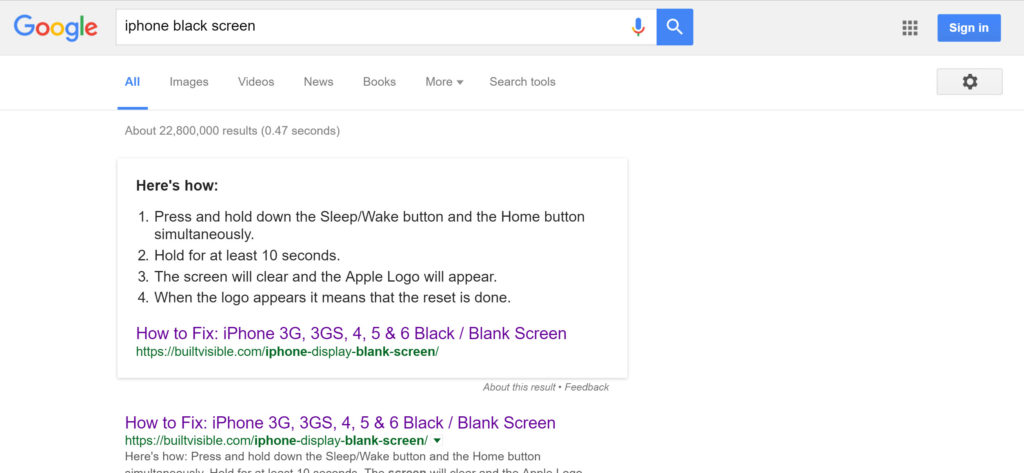
The update happened so quickly it was a genuine surprise. Instant gratification is an unusual experience in SEO! You’ll notice the “Here’s how:” text title. This change was purely by luck – I’d created a single line of text in close proximity to the ordered list and it parsed.
On that note I went in and made another change:
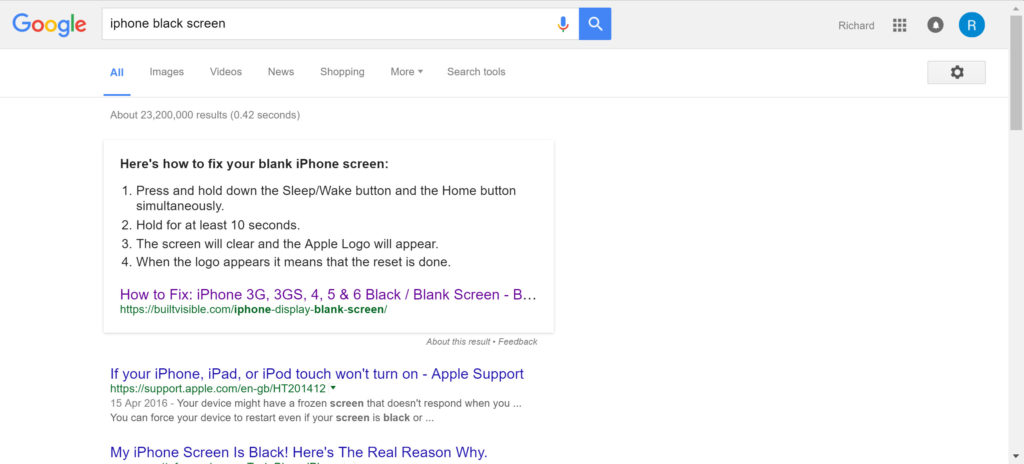
Not bad. So in summary, it looks like you can update an answer box result by improving the markup. You can induce a title to appear by placing text in close proximity to the ordered list.
Query number 2: “Remove Sandisk U3”
This result was interesting. It appeared Google was parsing each of the sub-headers in the article. Each sub-header implied a step in the process and contained a number e.g.
5) The uninstaller begins the format process
As you can see in the result this presented an issue, where Google were adding their own step numbers but including the ones in the sub-headers:
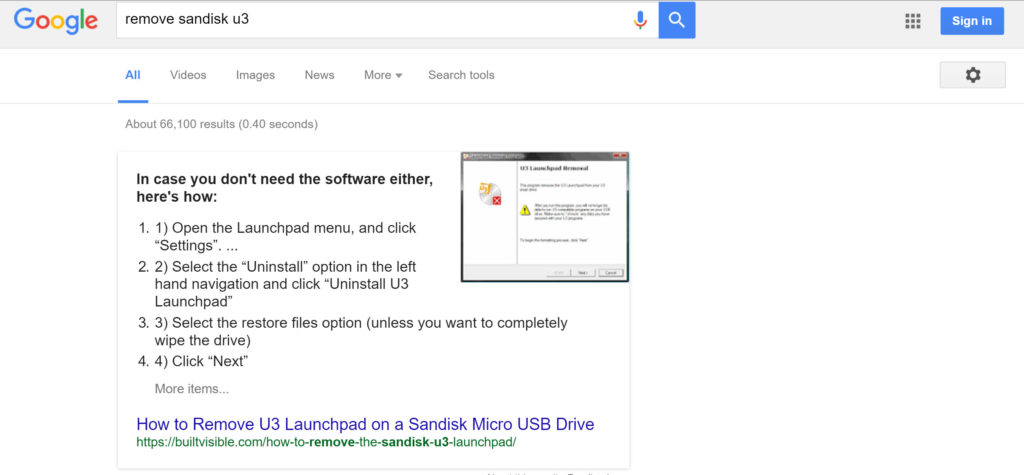
By adding the following mark-up structure, I cleaned this up quite quickly by submitting to Fetch as GoogleBot
- Thing number 1
- Thing number 2
Which cleaned up the result nicely:
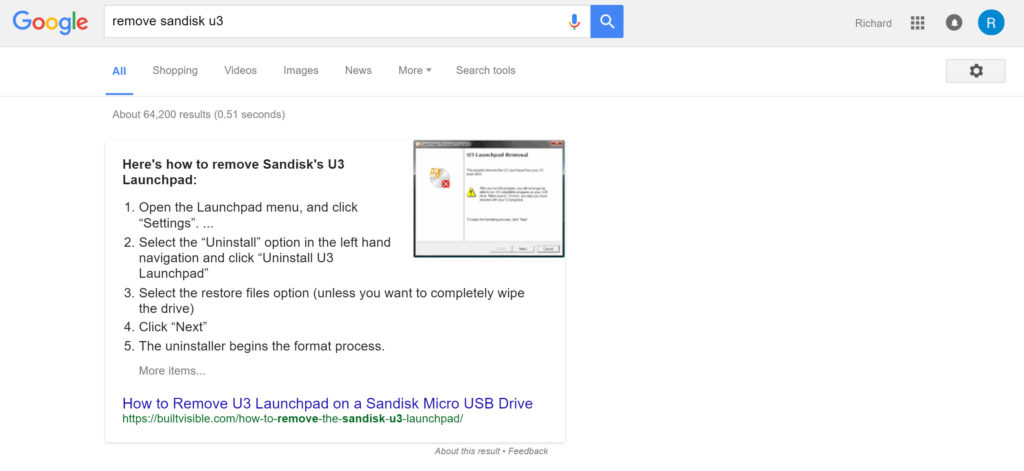
By the way, that short title text is well worth experimenting with. I seem to have found a sweet spot with the use of the phrase “Here’s how:”. You’ll note from this early attempt that there were two separate sentences, the final one concluding with “Here’s how to remove:”
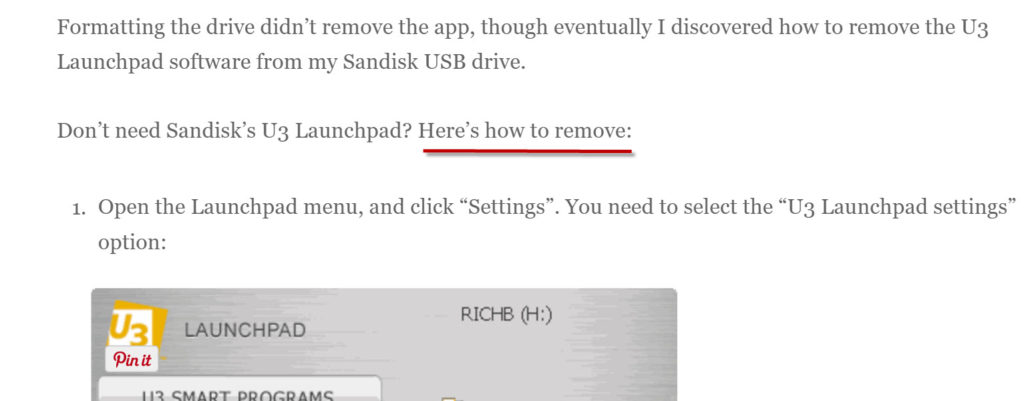
This was eventually reworded to “Here’s how to remove Sandisk’s U3 Launchpad:” and now it’s perfect.
So, play with the titles, find a maximum string length and optimise a little like you might a title element, only shorter.
You might notice there’s a thumbnail image in this result too. It’s coming from this mark-up in the article:
<img title="U3 launchpad removal Sandisk" src="https://builtvisible.com/wp-content/uploads/2009/06/u3-launchpad-removal-sandisk.gif" alt="U3 launchpad removal Sandisk" width="514" height="398" />
Is there a better chance of an image result in the answer box when the image filename and alt attributes match the query? I suspect so, and I think the image needs to be in reasonable proximity to the content being scraped for the answer box (just like the title text). To test I’ve added a horrendous image of an iPhone into our post. Currently, the picture is inside the ordered list.
The image may need to conform to classic image SEO best practice unless it’s contained in Schema mark-up. That would fit with the “how to boil an egg” result where the image file name was irrelevant to the query and there was no alt attribute in use, either. Interesting stuff.
Updated: the final test with the image included worked:
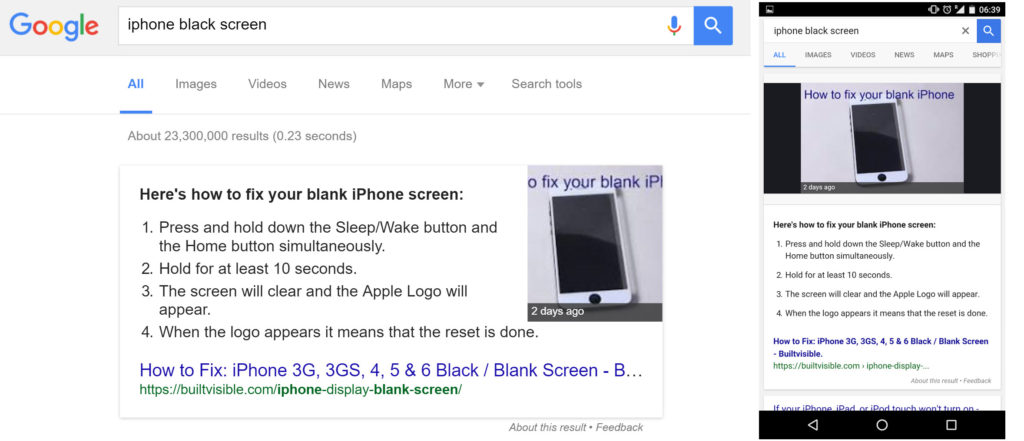
Query number 3: “How to install Ubuntu”
This article wasn’t the featured snippet. Dell’s page was. The code looked really messy on their site though, so I produced a quick “Summary” section and pasted it into the page.
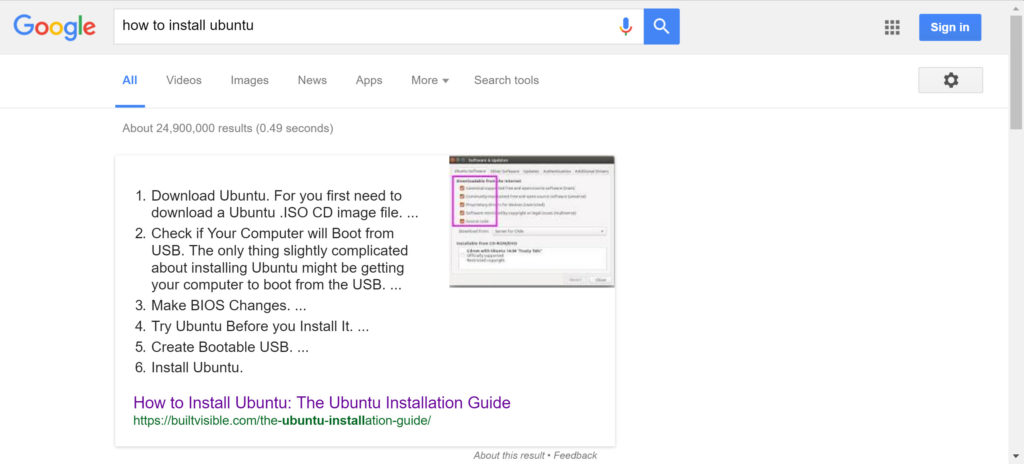
Query number 4: “How to use WGET in Windows”
By updating the content with a summary box I was reasonably confident I could take over an answer box. That’s by no means guaranteed. In this result we can see another site with the answer box directly above Builtvisible:
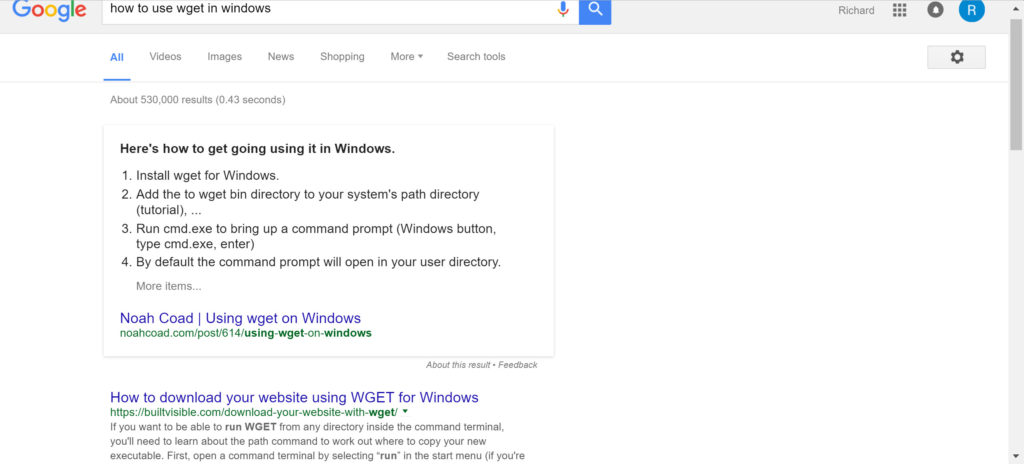
(URL)
I inserted a simple summary box:
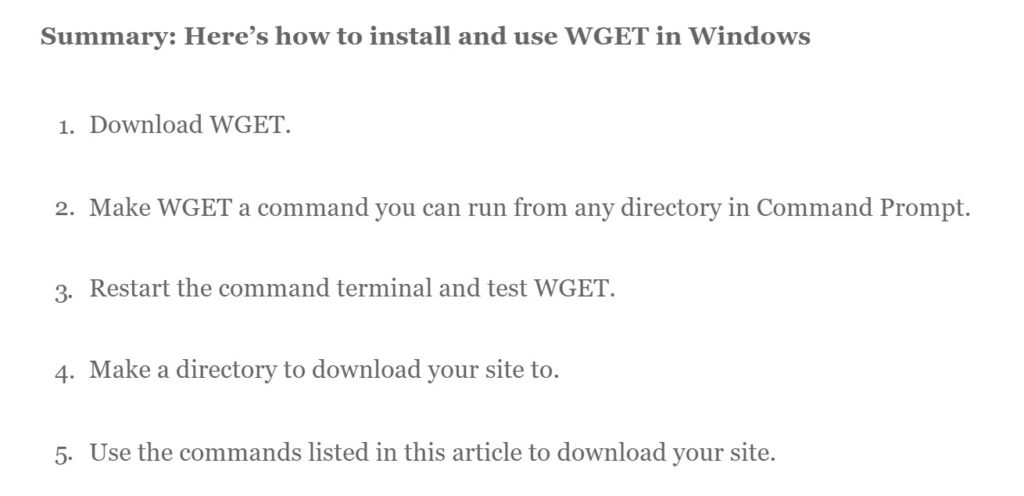
After the usual “Fetch as GoogleBot”, this happened:
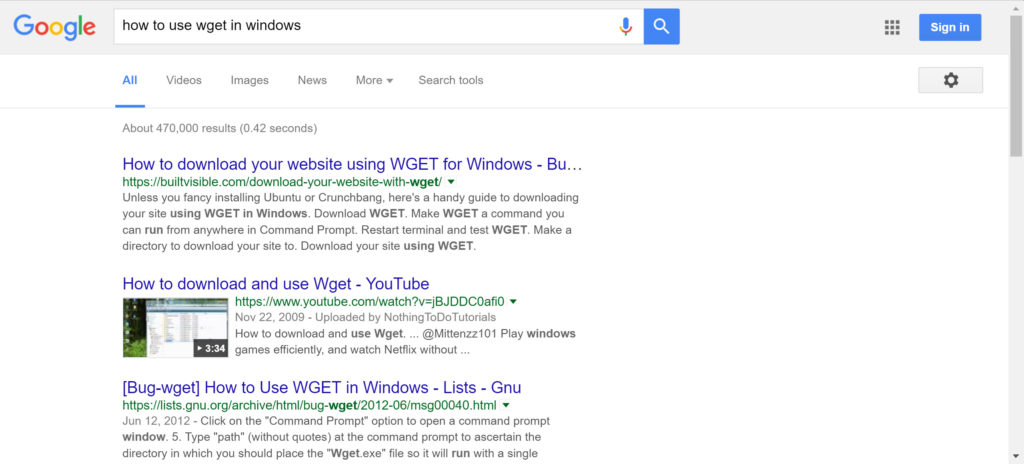
Note the extended snippet for my result? I have a theory that the extended (description) snippet may be a precursor to an answer box. The jury’s out on that one though, I’ll keep watching to see how the search result changes.
Update: this seems to have worked (thanks Kane for reporting the update):
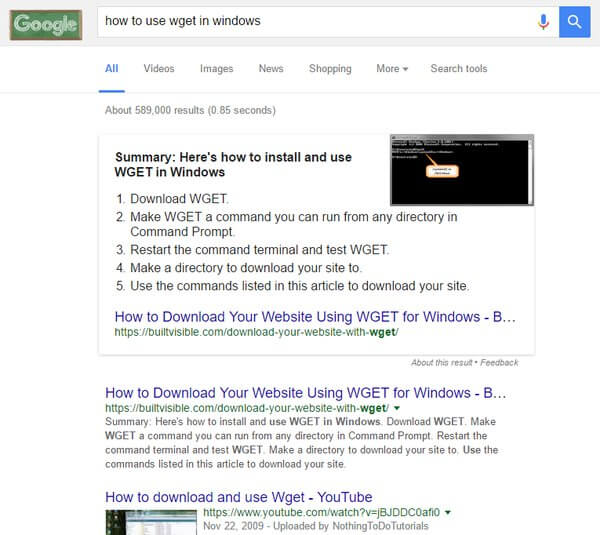
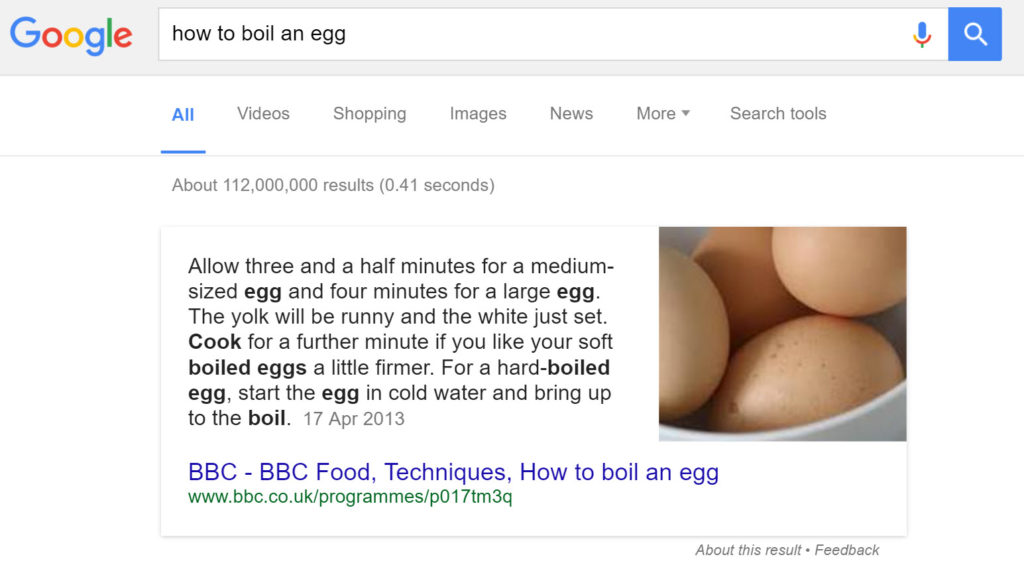

Richard Baxter
Little update on the wget for Windows query, it came good in the US overnight. Thanks to Kane Jamison for pointing that out:
https://twitter.com/KaneJamison/status/727611737747300352
Neil Dickson SEO
Nice post and good examples of your methodology
I’d like to see some CTR from Google SERPs for Rich Answers or a tool that shows if they were clicked on.
Don’t forget you can opt out of featured snippets altogether by preventing snippets on your page using the tag on your page. But why would you if as it seems to increase traffic if this post is representative – https://www.wordstream.com/blog/ws/2015/10/13/google-answer-box
San
Holy moley! Way to go! Please let us know if the traffic increases, compared to a previous normal day. GG
Andrew Rodgers
I have been interested in optimising for featured snippets and research commonalities between those results achieving featured snippets.
I took it from a standpoint of optimising content from scratch. Here are my recommendations:
– Provide a consise extract to potentially achieve paragraph snippets.
– Use ordered list (spot on above)
– Use anchor tags (within the ordered lists) that anchor the user down to the paragraph. Seems to be good for featured snippets and good for usability
– I also found that un-ordered lists that achieved the snippets seemed to have a commonality of the word ‘Step’ e.g. Step 1 Step 2.
Nice insight Richard.
Out of interest did you have any success in optimising content that didn’t have a snippet to display a snippet – or any data around this?
Andy
Sorin Amzu
Awesome piece of content.
Quick question, not sure if it was answered in the article:
Can you have 5 steps in the actual article but force the google answer snippet to only show 3 steps, so that people would have to click to the website to see the next steps?
Thanks.
Charles Taylor
My company has a huge support section and getting snippets for many of our help pages could go a long way in helping “deflect calls” away from our support centers and save a bunch of money. Thanks for sharing the details!
John Lawless
This is really interesting stuff.
I’ve managed to get an answer box for ‘how to fix a leaky radiator’ and other semantic versions of that search and plan on trying these techniques with other KW’s I’m targeting.
I had been wondering about ways in which to affect change in this way and I have no doubt that this will prove invaluable moving forward.
Great article and thanks for the insight, really impressive results.